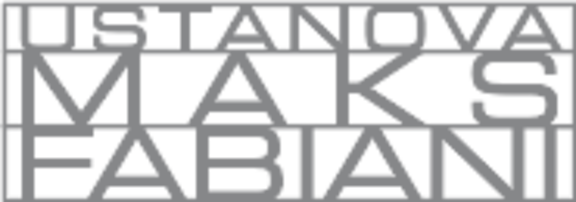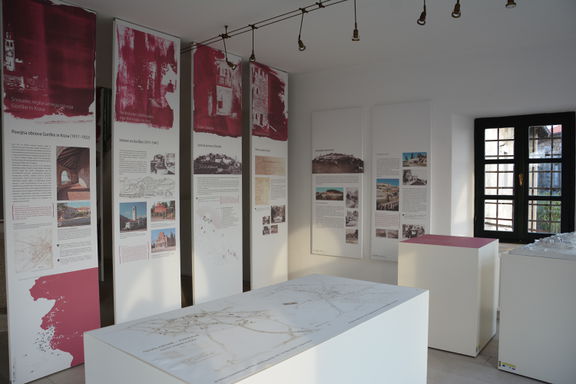Difference between revisions of "Maks Fabiani Foundation"
Anže Zorman (talk | contribs) |
Anže Zorman (talk | contribs) |
||
| Line 36: | Line 36: | ||
This archive became a part of the [[Centre for Karst Architecture]] in 2010 | This archive became a part of the [[Centre for Karst Architecture]] in 2010 | ||
| + | |||
| + | ==Foundation's activities== | ||
| + | |||
| + | The foundation's main project, the archive, also functions as library. There, one can find Fabiani's writings, his engineering plans and sketches, second hand assessments of his work and also various studies and photographic representations of his heritage. An extensive catalogue of all this is available on-line. | ||
| + | |||
| + | Other activities involve cooperating in exhibitions and projects like the 2006 documentary on Fabiani and Jože Plečnik. They set up workshops that often deal with practical architectural and urbanistic questions; one can here mention their collaboration with the Department of Architecture at the University of Ferrara. The foundation was also intensively involved in the renovation of the Štanjel village (which was in great part re-imagined by Fabiani) and helped set up the so-called ''Fabiani trail'' in that same area, where Fabiani lived out his last few decades. The trail consists of several pathways connecting the locations and buildings that are associated with his life. | ||
| + | |||
| + | Though the foundation existed only unofficially at the time of its release, it is in a way also the publisher of Pozzetto's book on Fabiani. Later, it published a translation of Fabiani's philosophical work ''Akma : duša sveta'' [Akma: Soul of the World] and produced various other publications. Since 2006, together with [[Slovene Association of Urban and Space Planners]], the foundation is involved in presenting the ''Maks Fabiani urbanism award'' for best projects of urban, regional and spatial planning in Slovenia and, since 2015, also in Austria, Italy, Croatia and Hungary. | ||
Revision as of 17:26, 20 October 2015
-
6 Mar 2015
Trgovski dom izložba mesta, a permanent exhibition commemorating the 150th anniversary of the birth of Maks Fabiani conceived by Nataša Kolenc and produced in cooperation with the Maks Fabiani Foundation,
Today the archive is housed in the renovated Štanjel castle, which is Fabiani's creation as well. As he was a renaissance type of a man, being also a town planner, an arts historian, a speculative engineer and a painter, philosopher, poet and fiction writer, this archive holds a rather varied collection.
Background
The idea for the foundation was formed while the architect and art historian Marko Pozzetto (1925–2006) was writing his book Maks Fabiani - Vizije prostora [Max Fabiani - Visions of Space], which was published in 1997. Pozzetto has been working on Fabiani for 35 years, during which he has been actively collecting and categorizing relevant documentation and other materials. Upon its founding, he contributed these to the foundation.
This archive became a part of the Centre for Karst Architecture in 2010
Foundation's activities
The foundation's main project, the archive, also functions as library. There, one can find Fabiani's writings, his engineering plans and sketches, second hand assessments of his work and also various studies and photographic representations of his heritage. An extensive catalogue of all this is available on-line.
Other activities involve cooperating in exhibitions and projects like the 2006 documentary on Fabiani and Jože Plečnik. They set up workshops that often deal with practical architectural and urbanistic questions; one can here mention their collaboration with the Department of Architecture at the University of Ferrara. The foundation was also intensively involved in the renovation of the Štanjel village (which was in great part re-imagined by Fabiani) and helped set up the so-called Fabiani trail in that same area, where Fabiani lived out his last few decades. The trail consists of several pathways connecting the locations and buildings that are associated with his life.
Though the foundation existed only unofficially at the time of its release, it is in a way also the publisher of Pozzetto's book on Fabiani. Later, it published a translation of Fabiani's philosophical work Akma : duša sveta [Akma: Soul of the World] and produced various other publications. Since 2006, together with Slovene Association of Urban and Space Planners, the foundation is involved in presenting the Maks Fabiani urbanism award for best projects of urban, regional and spatial planning in Slovenia and, since 2015, also in Austria, Italy, Croatia and Hungary.
See also
- Centre for Karst Architecture
- Museum of Architecture and Design
- Slovene Association of Urban and Space Planners
- Plečnik Collection
External links
- Maks Fabiani Foundation website (in Slovenian)
- A catalogue of the foundation's archive
- A documentary on Maks Fabiani and Jože Plečnik (in Slovenian)
- An article of Fabiani's engineering projects (in Slovenian)
- Brochure on the CKA and Max Fabiani (PDF) (English, German, Italian)
- The Fabiani Path




